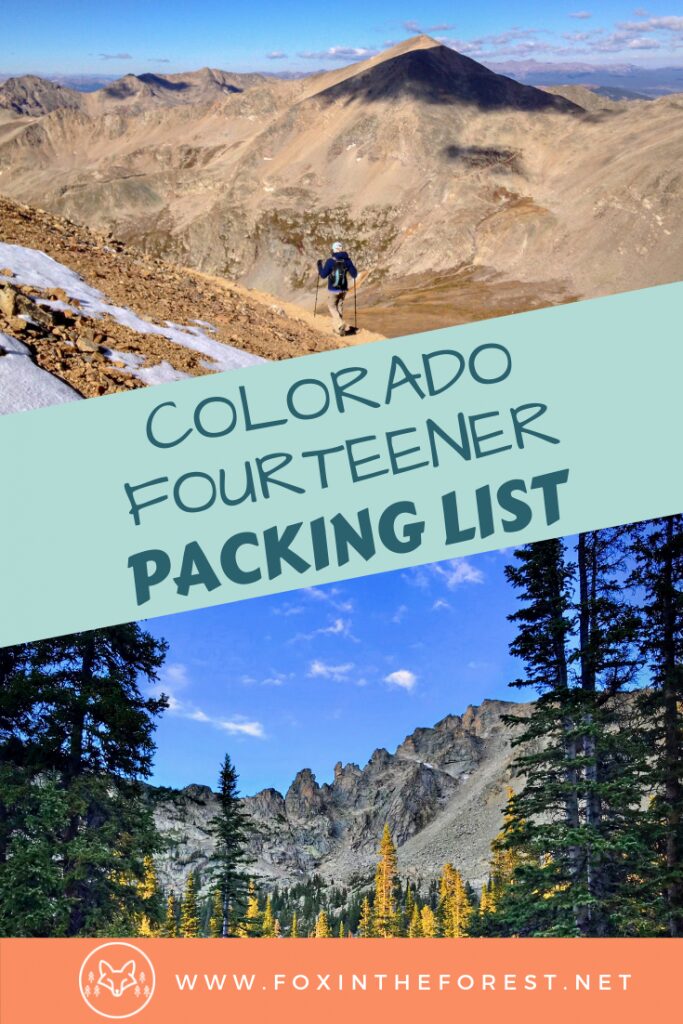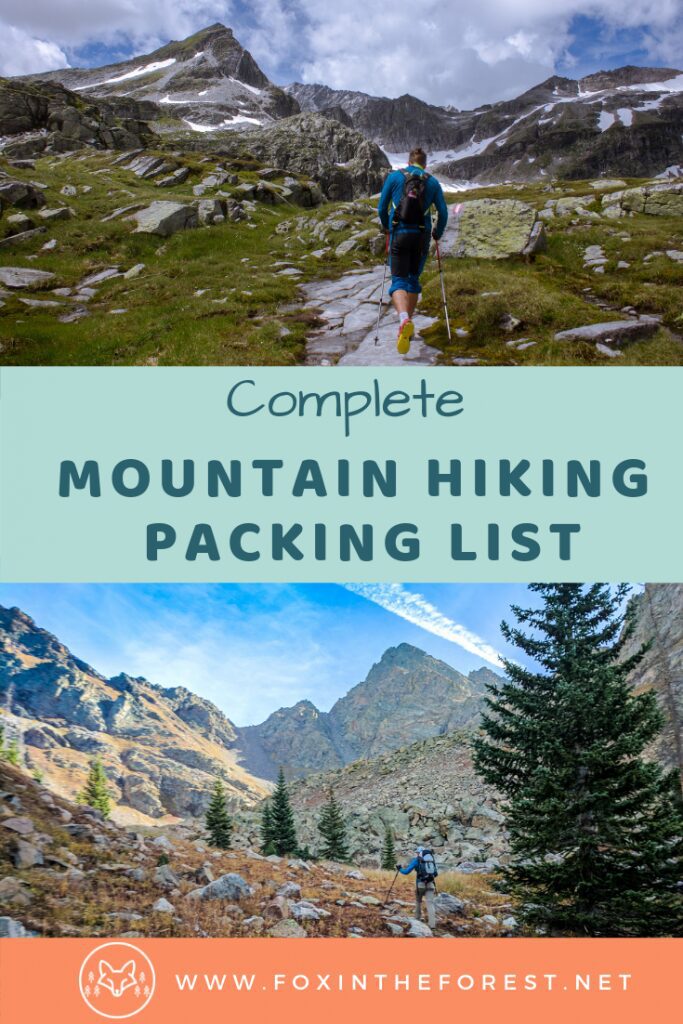Last Updated on November 5, 2021 by foxintheforest
Every year, Colorado’s mountains take the lives of avid hikers. Many of these hikers go into the mountains, unprepared for the task at hand. Having a proper 14er packing list not only increases your chances for a successful summit, but also keeps you prepared should there be an emergency. Stay safe in the mountains this summer and carry these essential items.
Note: This post contains affiliate linking. That means if you click on the link to a piece of gear on my website and purchase it, I get a small kickback at no extra cost to you. You get instant access to awesome gear, and I use the money to keep this blog moving. It’s a win-win for both of us.
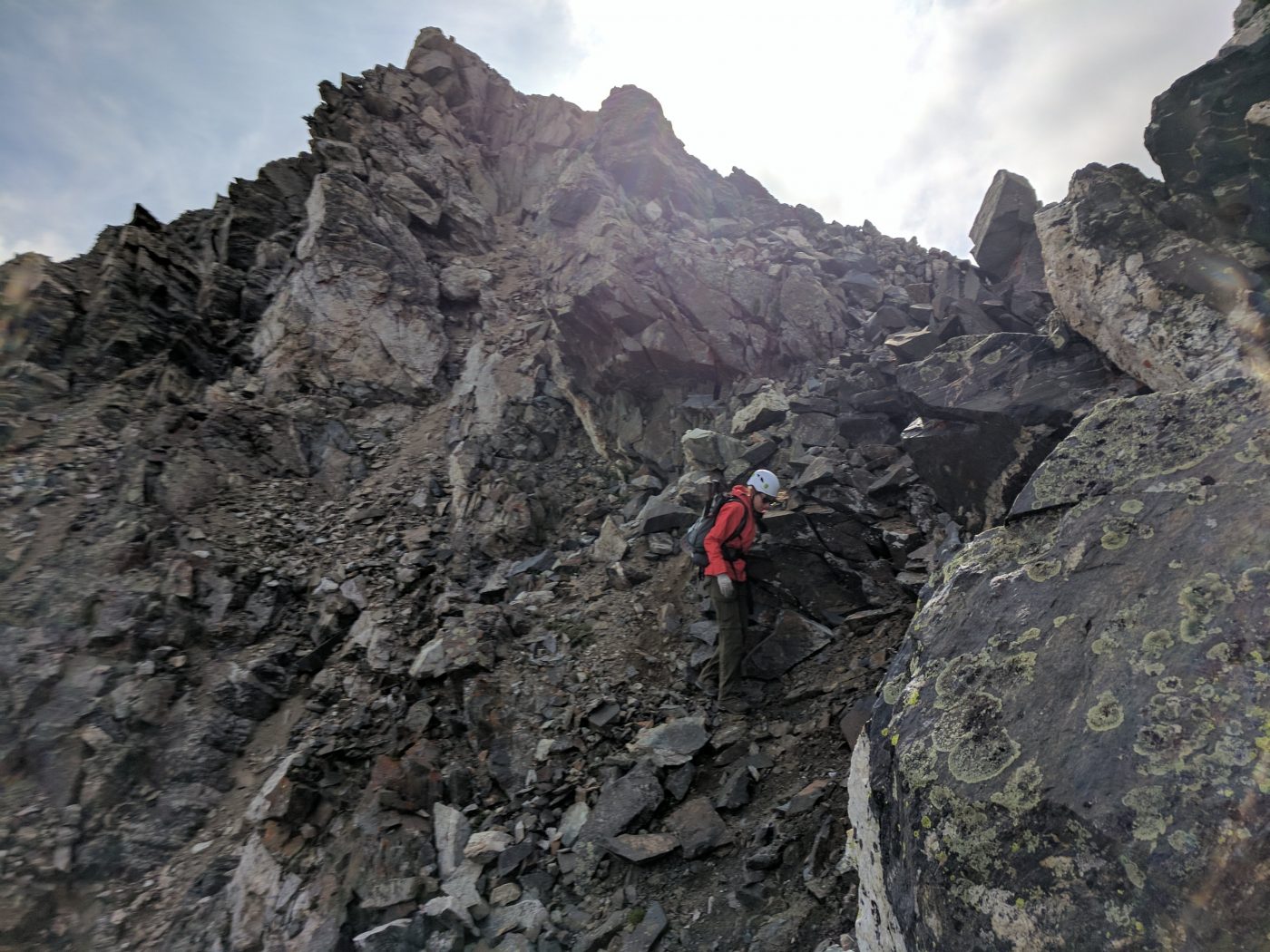
Things to Know Before You Hike a 14er
Before you even pack your bags, get prepared for your big hike. Hiking above treeline, scrambling, and technical climbing all require certain skills. Be sure to fully understand what you are getting into before you start your mountain hike or climb. Always check the weather, start early, train up, and be prepared for adverse conditions.
For more about how to prepare for hiking a Colorado 14er (or any mountain) check out these resources:
- Tips and tricks for your first Colorado 14er
- Hiking Grays and Torreys Peak: What YOU Need to Know
- The “Easy” Colorado 14ers by type of hike
- 6 incredible Colorado 13ers near Denver
- How to beat Summit Fever
- Mental tips for mountain climbing
- Unique ways to overcome your fear of heights
- Adjust to the altitude safely
Safety Versus Weight
As a mountaineer, pack weight is certainly worth considering. However, there is a reason I train with a 40lb pack on my back in the gym. In the mountains, safety rules, above all else. Period. I train with extra weight so I am prepared to deal with a heavier pack. PLB’s (emergency beacons) weigh a lot, but will I be grateful I carried that thing up a mountain in the event of an emergency? Absolutely. Don’t be as concerned with weight as you should be about your preparation for an emergency.
What Size Pack do I need to Hike a 14er?
For most alpine hikes, a 30-liter pack should offer plenty of room for all of your hiking gear. The important thing is that everything fits into the pack. You don’t want things hanging off of your bag while hiking. The swinging items not only make hiking tougher, but they can also throw you off balance, causing a nasty fall.
Make sure your pack fits you properly and is comfortable to wear for eight hours or more. The last thing you want is bruising and chaffing from a poorly-fitted pack.
What to Pack on a 14er Hike
When it comes to hiking and climbing 14ers, there are a few additional safety items you’ll want to carry with you. Remember, even on a sunny day, the weather can change in an instant, so it’s important to be prepared for a 14er hike. Let’s take a look at what to take on a 14er hike.
The Ten Essentials
I do not leave for any hike regardless of duration without the ten essentials. You’ll always find these items in my pack:
- Navigation: I will have a printed map and compass as well as a topo map loaded on my phone (I use Topo Maps +). I’m not married to my GPS app, but for a free app it does a great job at keeping me on track. I’ll also save any photos and relevant route beta (climbing term for information) on my phone. If a route requires me to make a particular turn or watch out for a particular rock feature, I will go ahead and print those photos as well as save them to my phone. Do not ever rely solely on your phone.
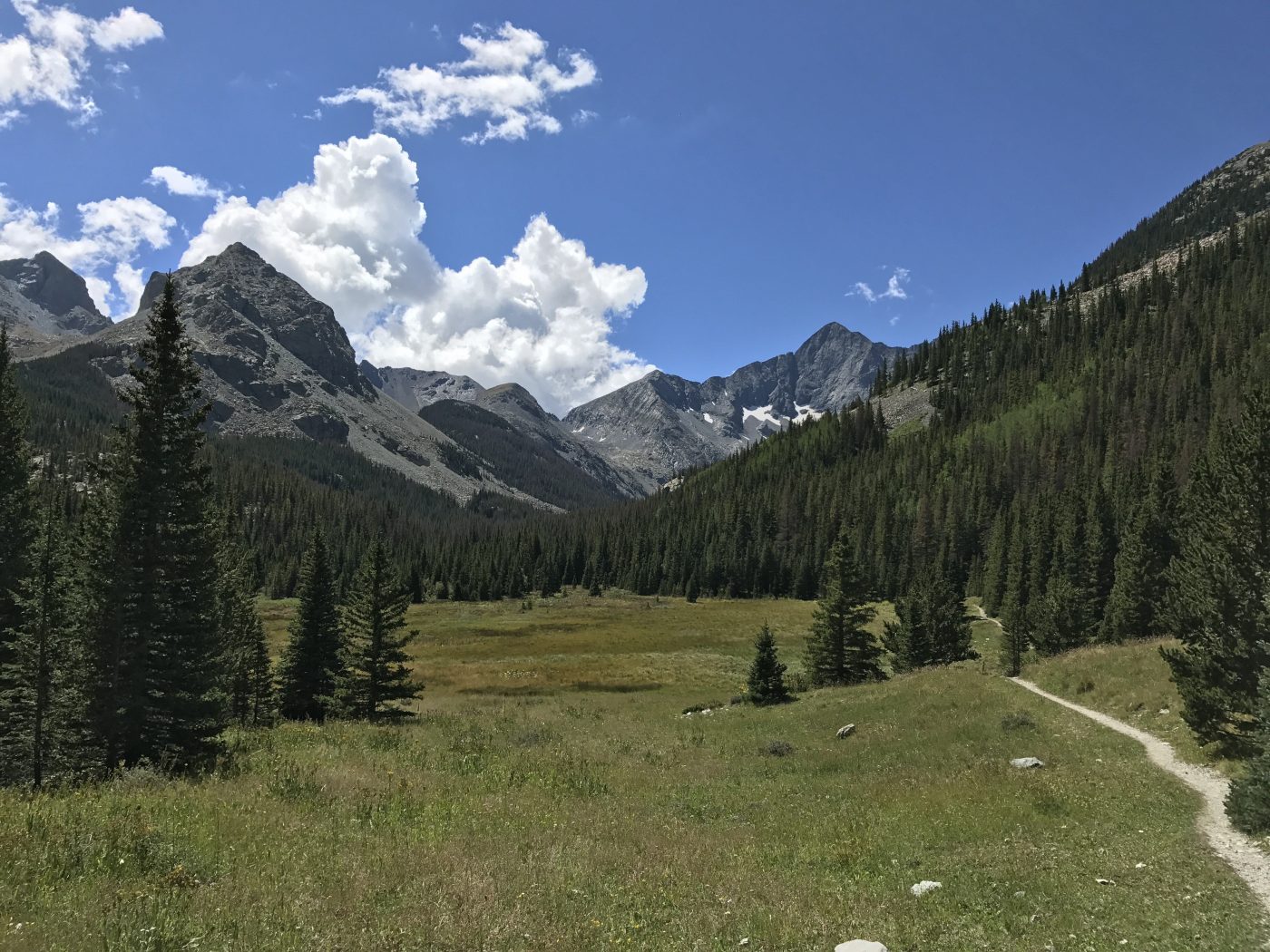
- Sun protection: You bet I travel with sunglasses and a hat. I’ll also wear plenty of sunscreen and re-apply throughout the day, especially if there is any snow present. Remember, snow reflects the sun’s rays so be sure to hit under your chin and nose.
- Insulation: Extra layers. I have a rather complex layering system, but I’ll always bring a long-sleeved thermal. Also, never climb a mountain without a warm hat and gloves. On my first 14er, I left my gloves at home. There were over 40mph winds at the top of the mountain. Temps were freezing in mid-July and I had to scoot pretty quickly off of the summit. More on layers below.
- Illumination: The most important thing about climbing a mountain is to start early. By early, I mean before the sun has risen. It’s not uncommon for me to start climbs at 3 am. Therefore, always pack a headlamp (I love this affordable Black Diamond headlamp). Bring extra batteries as well.
- First Aid Kit: I use a standard hiking first aid kit with a few added bells and whistles. My kit also includes a blister kit, super glue (for bad cuts), and extra ibuprofen. Once a month I’ll check the integrity of my kit and add any additional medicine that may need to be replaced.
- Fire: I carry a magnesium fire starter with a knife to get things going. I’ll also carry a lighter.
- Repair Kit and tools: Chances are I won’t need to repair much, but I have a special kit that has a few handy items that would help in an emergency. On a small carabiner, I have a small saw, fishing hooks, fishing line (think needle and thread), magnesium, and flint all wrapped in about 20 feet of bright orange para-chord. This tiny kit provides infinite uses in the event of an emergency. A few feet of duct tape wrapped around a water bottle or trekking pole is also useful.
- Nutrition: I’m always carrying snacks, and lots of them, bring more than you anticipate needing. My personal favorite are the Honey Stinger Waffles. DELISH!
- Hydration: Extra water. For any climb lasting around eight miles, I will carry 1.5 liters of water in a hydration pack. For longer climbs, I’ll carry 2.5 and if I think that won’t be enough, I’ll bring my Sawyer Squeeze water filter. Now, I also carry 2 iodine tablets for emergencies.
- Emergency Shelter: I will never climb a mountain without my SOL bivvy. It’s small, lightweight, and invaluable if I ever need to unexpectedly spend the night or await rescue. I even have one for my dog.
What to Wear on a 14er HIke
Layering is the single best way to stay comfortable in the mountains. Whenever you climb, bring a puffy jacket as well as a rain jacket. I love my RAB Microlight Alpine Down Jacket. Stuff it into its stuff sack to keep it nice and compact in your pack. My recent obsession is my REI Rhyolite Rain Jacket. It’s a perfect wind layer for that high-alpine “breeze” and it provides ample water protection. Also, I’ll usually have a long-sleeved base layer. My personal choice of material is merino wool, however, it can be any type of athletic material.
Avoid cotton at all costs. Cotton doesn’t do a good job of drying up after you sweat. Hiking and climbing in damp clothes with a breeze in the mountains can easily lead to hypothermia – even in the middle of summer. The name of the layering game? Stay comfortable, try to sweat as little as possible by wearing less clothing while you hike. Layer up when you take breaks to avoid cooling off too much and catching a chill.
For an extensive look at the best outdoor clothing for your summit, check out this guide to hiking clothes on any budget.
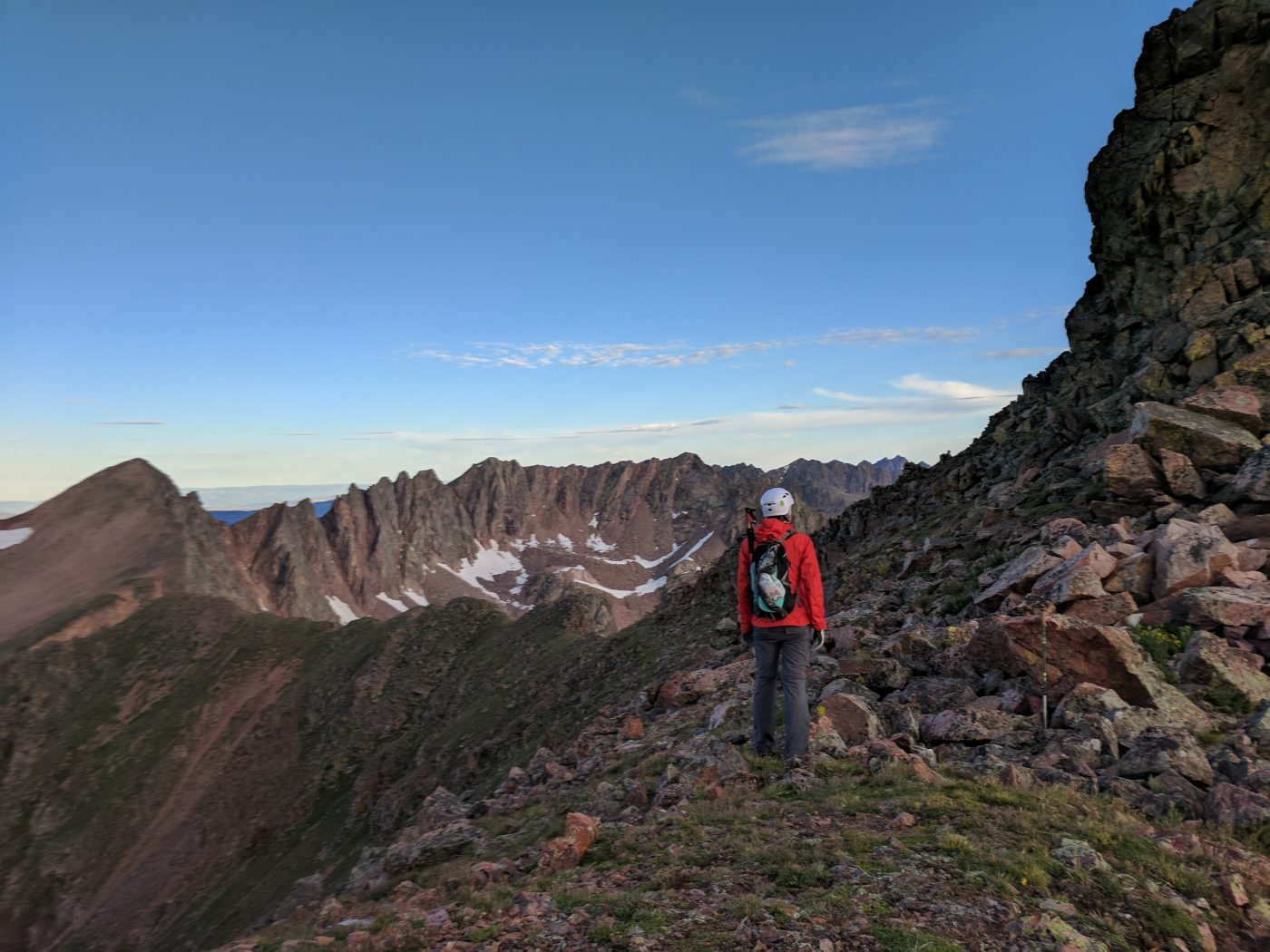
What to Eat
I eat like a bird, and life on the mountain is no different. For snacks, I’ll have a variety of options from fruit leathers to chocolate. Often times, ascending quickly to higher altitudes can lead to a loss in appetite, even if you are hungry. Therefore, bring foods that you will want to eat (read: junk food snacks packed with carbs are totally game). Try to pack something salty, sweet, as well as an energy bar. I usually have around four different snacks with me on an eight-mile climb. Always bring more food than you think you will need, there’s nothing worse than being near the summit and out of food!
Bathroom Readiness
With all the hydrating you will be doing, you better be prepared for a high alpine pee break. For men, this is easy, but for us ladies, it can be a bit tougher. Avoid using toilet paper for number one. Instead, use a pee rag. Mine is just an old bandana that I attach to my bag to dry in the wind.
For number two, if you are above the trees, you should pack it out. Doggy poo bags should do the trick. Bring a couple of extra ziplock bags to store your waste. Also, pack out toilet paper too! There is nothing more disgusting than a summit littered with human waste. It doesn’t break down that high up, and neither does the paper.
Hey ladies, I’ve got the perfect solution to your squatting blues, here’s the down-low on the pee funnel, no holds barred.
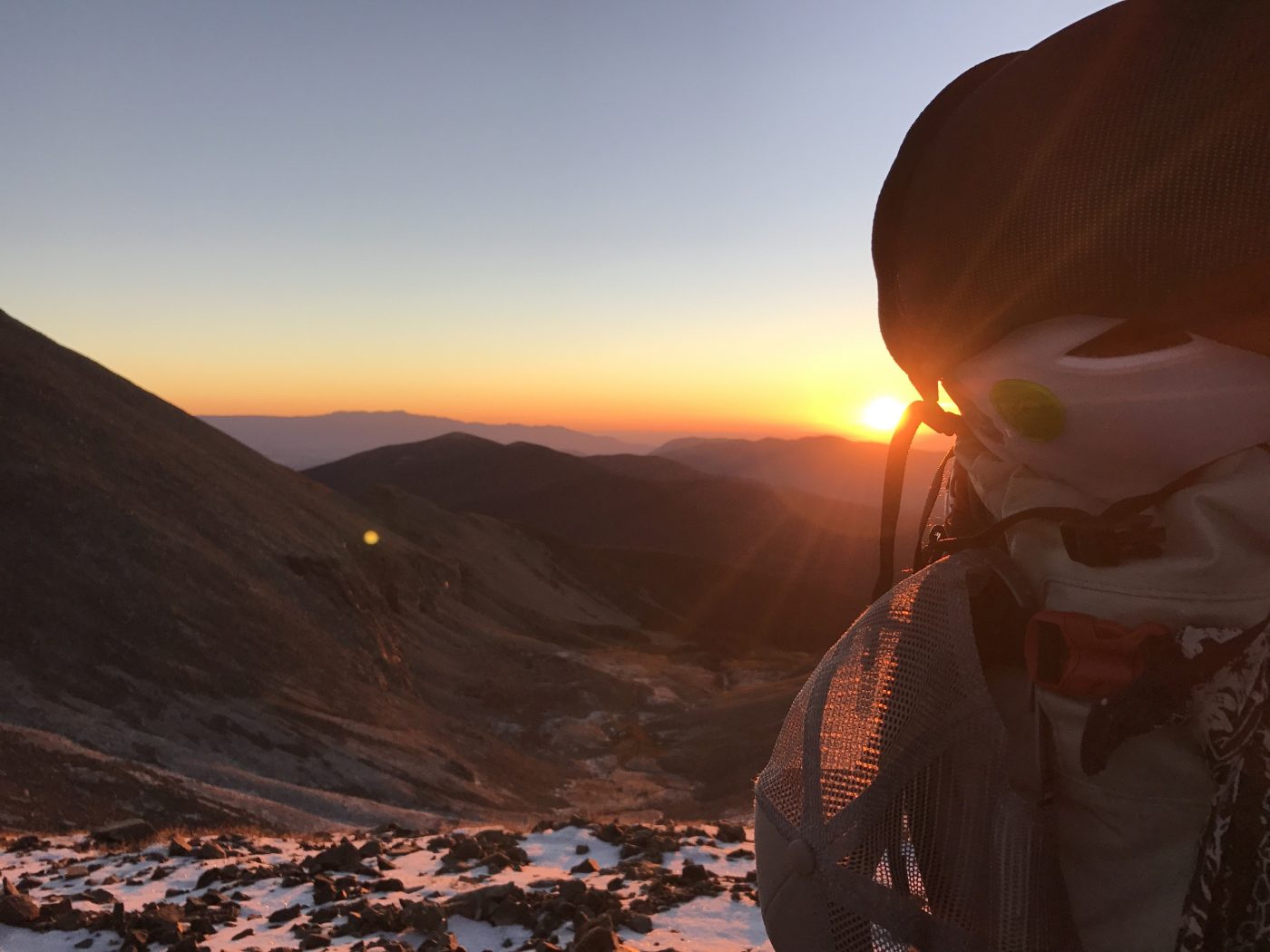
Emergency Beacon
Recently I purchased a PLB. This emergency beacon is registered with NOAA (the DeLorme InReach also gets rave reviews). If there is an emergency this beacon simply alerts emergency services with my GPS coordinates. There are no fancy bells or whistles. However, when it comes to emergency devices, you have tons of options. For an in-depth look, check out Outdoor Gear Lab’s roundup of emergency beacons.
Planning a trip to Colorado? Check out these resources to help plan your trip:
- How to find free camping anywhere
- The best day hikes near Denver
- Free camp spots near Denver
- Amazing fall hikes in Colorado that you’ve never heard of
What to Pack for a 14er with a Class 3 or Class 4 Route
Class 3 and 4 require a few extra pieces of gear to make your day in the mountains safe. Always wear a climbing helmet on any climb above a class 2. Period. Rockfall can kill you. One of the biggest problems on mountains isn’t just rock fall from you, but from other groups climbing who aren’t paying attention to those below them.
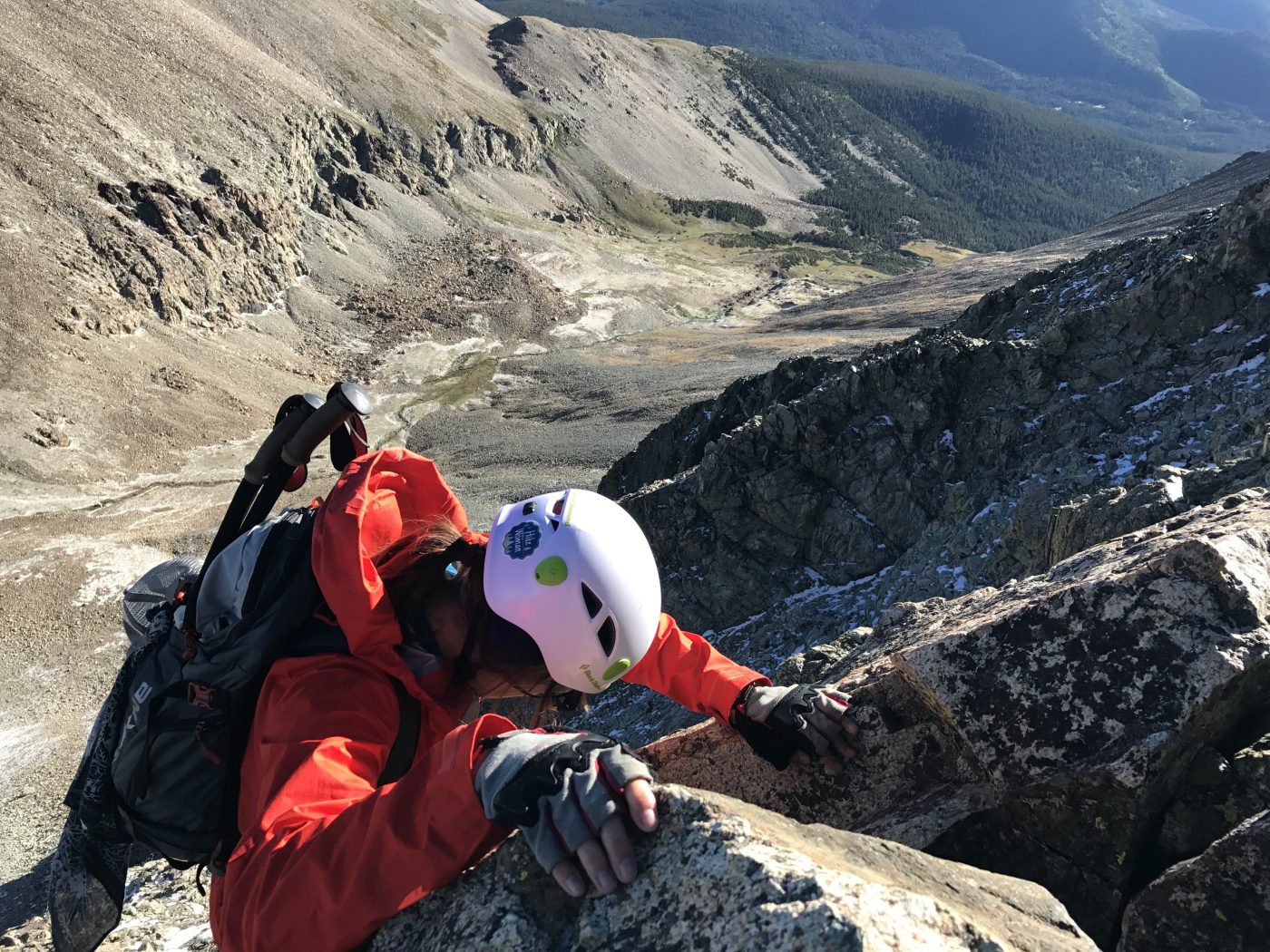
Another handy item is fingerless gloves. You can opt to purchase a pair of climbing-specific gloves. However, a pair from Home Depot will be all you need. The lack of fingers allows you to get a firm grip on your hand holds, while also keeping your hands warm.
Optional Items for Your 14er Packing List
Trekking Poles: These Black Diamond Ergos are a must-bring on my list. However, not everyone likes them. They save your knees on approaches and descents. I’ve also found that travel with one pole can be extremely helpful when descending scree gullies. Therefore, I highly recommend them.
Microspikes: This post doesn’t focus on winter summits, but microspikes aren’t a bad thing to have on hand. I sure wished I had them on Mount Lindsey this past week. We navigated hail build-up from a recent storm without traction. Not one of my better safety moves that’s for sure. They are helpful if there is a bit of snow or ice to navigate when the consequences of a fall are low. However, they do not provide nearly as much stability as crampons. Therefore, use them with caution. I will pack these well into early July and put them back in my pack in mid-August.
I fit all of these items into a 35L pack with room to spare! Sometimes I’ll bring my DSLR camera, or I’ll just enjoy having a lighter pack. Either way, I know I’m fully prepared for a day on the mountain.
